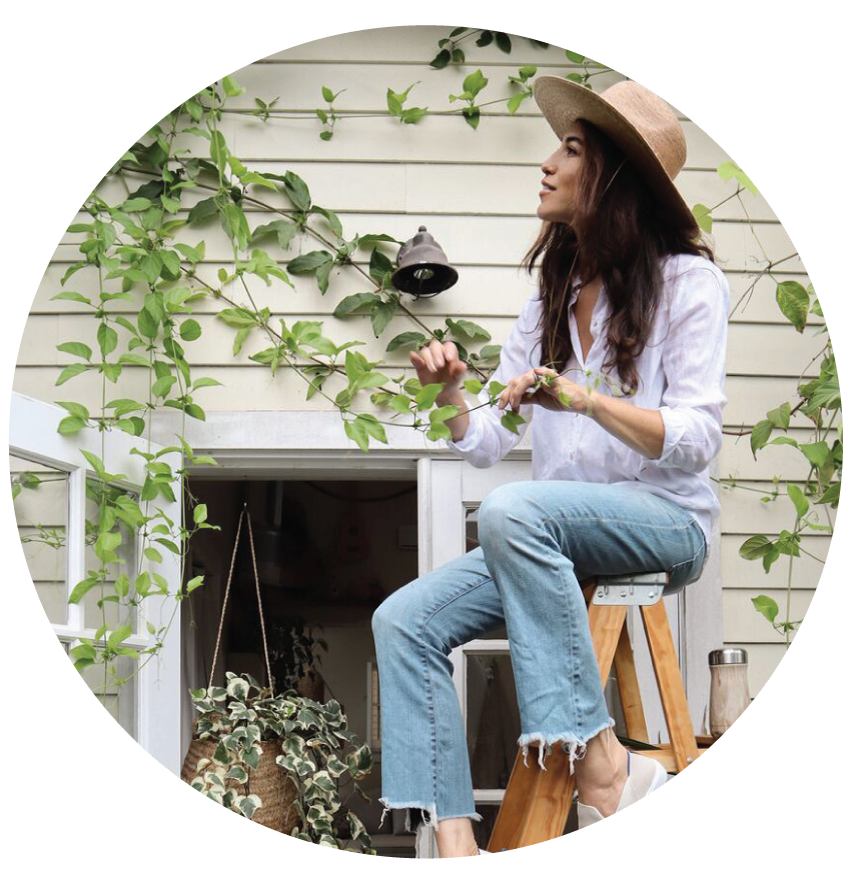A Look Inside: Food Wrap Storage
Many of you have asked for an unstyled look inside our drawers and cubbies here at the Cottage to show how we store our homewares. Since The United Nations' Intergovernmental Panel on Climate Change just released a bleak and urgent report concerning the health of our planet, I figured toady’s entry could show how we almost always stick to reusable food wraps and baggies, and how we accommodate them in our tiny house. While we don’t use any clever tactics for stashing these items, I’ll share a few no cost (or low cost) space-savvy methods towards the end of this post as well.
We’re lucky enough to have several drawers in our kitchen. (I’ve lived in numerous apartments that had 0-2 drawers, and I know that can be a struggle.) We don’t need to stash much in terms of our baggies and wraps, so we’re able to fit everything in a shallow space between the range and refrigerator.
We have a roll of foil (and we reuse sheets as often as possible) along with some wax paper, but other than that, all of our baggies, wraps and kitchen linens are reusable/non-disposable.
Above: About 6 reusable bags in 3 different styles are all we need for snacks for the entire family. (We also have a PlanetBox, and some stainless steel to-go containers.)
Above: Beeswax wrap folds or rolls up tight, leaving more room in your kitchen than a standard roll of cling wrap.
Above: We have two, roomy waxed bread bags. We use them for fresh loaves of bread about twice per week.
Above: Waxed brown paper bags help us carry miscellaneous little goods. We only use about one per month and could go without them, but they’ve turned out to be fun with West for a myriad of mini items and snacks.
Above: Mesh produce bags consume less space than plastic bags. They can be washed easily, and are great for stashing in a drawer until needed, and/or in your daily backpack or handbag.
Above: Linen bowl covers are pretty, lightweight, slim, and eco-friendly. Since they simply pop over your everyday dining and cooking bowls, there’s no need to buy extra storage containers for your basic, everyday leftovers.
Above: Our Ambrosia Bags, which I shared in this post, are also kept in this drawer when not in use. They help us preserve our produce longer, greatly reducing our food waste.
Above: I have an entire “Bake House” bag set, handmade by Peg and Awl. I use these for a bit of everything, from carrying full market groceries, to transporting little pastries for West.
STORAGE
If you’re struggling to fit all of these items in your compact kitchen, first explore what items you can potentially live without, and consider donating those to a nearby non-profit. If you don’t have an available drawer as we do and are seeking some no-cost, simple storage solutions, see two examples below— one from our neighbor’s home, and one from the Cottage.
Above: Our neighbor, @ZiaFinds, who lives in a tiny cottage like ours, simply keeps her baggies and loose wrap grouped together in a net bag hanging beside aprons in her kitchen.
Above: An illustration from our upcoming book Small Space Style demonstrating an easy, no-cost way to store boxes of foils, wraps and baggies on the inside of a kitchen cabinet door. Want to go green? Good news— it’s just as easy, and is FAR better for the environment. Simply nail or tack an old magazine file (as seen on the right) or a similarly slim box on the inside of the cabinet door and fill that with your reusables instead of disposables.
Explore more posts from our “A Look Inside” series:

















